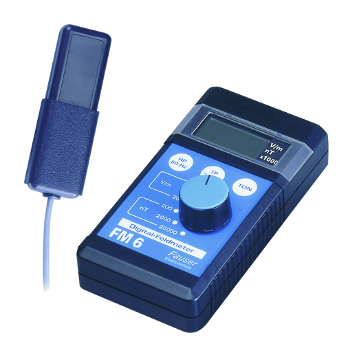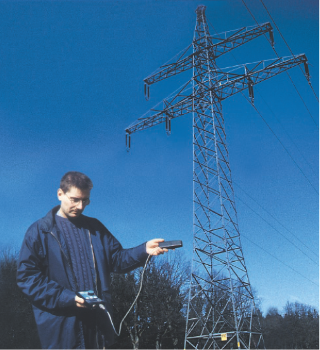
Fieldmeter FM6
- measurement of alternating electric and magnetic fields
- potential-referenced and potential-free measurement of electric fields
- frequency range 10 Hz up to 100 kHz
- resolution 1 nT respectively 0.1 V/m
- sound generator for acoustic display of the measured values
- optional measurement of the capacitive coupling (body voltage)
The professional measuring device for electric and magnetic fields
The Fieldmeter FM6 is a multi-purpose electrosmog meter for alternating electric and magnetic fields. On account of its effective value display according to TCO/MPRII and the high degree of accuracy, it is primarily used for professional purposes. Private users, however, also appreciate FM6 because it is easy to operate. FM6 is the standard meter used in organic architecture thanks to its accuracy of measurement and the numerous options for accessories and connections. The qualities of FM6 have been confirmed by Öko-Test (6/96); the test winner FM6 was the only electrosmog meter out of 15 tested devices that was considered "recommendable".

Compact multi-purpose measuring probe with directional characteristics
The separate probe casing houses two detectors for electric and magnetic measurements. For this reason, it is not necessary to change probes, the measurement can be carried out quickly and easily. The directional characteristics of the external probe enable you to localise disturbing sources, while the display unit provides for a comfortable reading of the measured values.
Wide dynamic response range
The three ranges of measurement each for alternating electric and magnetic fields enable you to identify low field intensities like those that are present in living rooms and bedrooms as well as high field strengths generated in the immediate vicinity of technical installations.
Large frequency range
The wide-band frequency range from 16 Hz up to 100 KHz includes a large spectrum of technically generated alternating electrical and magnetic fields: from the 16.7 Hz of the German Federal Railways to the 50 Hz of the power supply network, ranging to higher frequencies of screens and switch mode power supply units.
Frequency analysis by way of filtering functions
Two frequency filters enable you to differentiate the electrosmog on the basis of the components of traction current and higher-frequency fields of electronic devices included in it.
Potential-related measuring of electric fields
A pre-defined potential of the measuring device is necessary to carry out a sound measurement of an electric field. Fieldmeter FM6 offers two options for this purpose: the device can assume the potential of the person who carries out the measurements, or it can be grounded.
Effective value conversion (TRMS)
The Fieldmeter FM6 uses real effective value conversion of all forms of signals; this type of conversion is otherwise only provided by devices that are considerably more expensive. This method enables measurements according to the TCO/MPRII regulations and the German Federal Immission Control Act (BImSchG).
Well-readable display of measured values
The large, battery-saving digital display enables a clearly legible presentation of the measured values.
Automatic battery check
The display shows a message when the battery needs to be changed.
Acoustic indication of the measured values
The sound generator enables an acoustic indication of the field strength.
Multi-purpose connection for additional devices
The optionally available multi-functional connecting socket supplies an AC voltage signal and a DC voltage signal of the measured value and enables an external voltage supply for FM6 in addition.
Measuring of capacitative coupling (body voltage)
Persons and metal objects (bedsteads, desk lamps, etc.) absorb, similar to an antenna, voltage that can be measured using a manual electrode or a measuring tip (Art.-No. 110) from the electrically loaded environment.
Potential-free electric field probe EPL
Alternating electric fields can be measured potential-free with the electric field probe EPL (Art-No.: 180).





































 Withdrawal
Withdrawal Payment / Shipping
Payment / Shipping

 Contact
Contact Newsletter
Newsletter Product registration
Product registration

